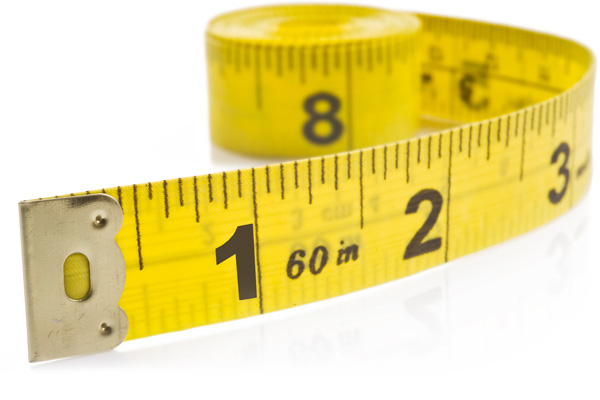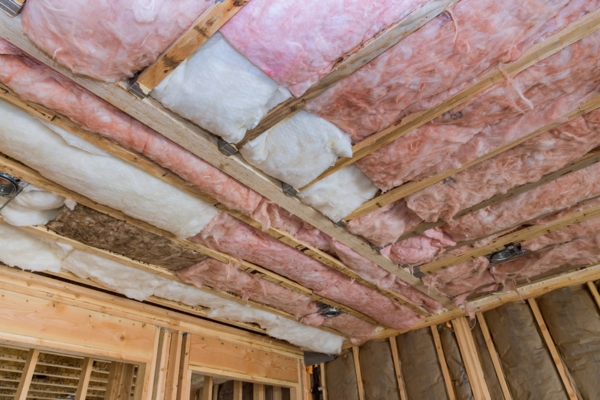The Importance Of Choosing The Right Furnace Size For Your Home

While large furnaces may seem appealing, they’re not always the optimal choice. An oversized furnace can lead to short cycling, frequently turning on and off, which wastes energy and accelerates wear and tear. It is advisable to choose a furnace that aligns with your home’s unique requirements. Correct furnace sizing promotes steady comfort, enhances energy efficiency, and extends the service life of the heating system.
Choosing a furnace is a decision that extends beyond just selecting a model. It demands a thorough assessment of your home’s size, insulation quality, and specific heating requirements. Working with an experienced HVAC contractor, like McAllister Energy, guarantees precise furnace sizing and compatibility with your home’s characteristics. This approach prevents common installation errors and optimizes comfort and efficiency. In this article, we’ll explore why proper furnace sizing is crucial for peak performance.
The Critical Role of Accurate Furnace Sizing
Contents

Selecting a furnace based on incorrect criteria can lead to numerous problems. Many homeowners, lacking proper advice, choose units that are too big or too small, which causes discomfort, inefficiency, and higher operational costs.
The more the furnace size deviates from your home’s needs, the greater the negative impact. An inappropriate choice can lead to ongoing discomfort and unnecessary financial burdens, as even minor sizing errors can significantly affect comfort levels and energy expenses.
Choosing the correct furnace size initially is essential for years of reliable heating. Continue reading to explore the disadvantages of incorrect furnace sizing and find practical advice on picking the ideal unit for your home.
Book Your Complimentary Heating Consultation: Don’t risk your comfort. Reach out to us now to arrange a free heating consultation, guaranteeing your furnace is the ideal match for your home.
Issues with Improper Furnace Sizing
Selecting a furnace that is too large or too small can lead to significant heating problems and inefficiencies. We’ll outline some of them below.
Comfort Challenges

A furnace that’s too small can’t adequately heat your home on the coldest days, often running non-stop without reaching the desired temperature. This leads to extra layers of clothing and blankets, continuous discomfort, and rising energy costs.
Conversely, an oversized furnace heats areas too rapidly, causing the thermostat to turn off the system before the entire home is warm. This results in uneven heating—some rooms are too cold while others may be overly warm, creating discomfort and wasting energy without effectively heating the whole house.
Schedule a Free Consultation for Efficient Heating: Enhance your home’s warmth and energy efficiency. Contact us today to arrange a free consultation and learn how choosing the right-sized furnace can reduce your heating costs.
Furnace Efficiency
Furnace energy usage fluctuates based on operational phases, with the highest consumption during start-up and shut-down. To enhance efficiency, reducing these cycles is essential. A furnace achieves optimal energy efficiency when it operates in a steady state, consistently maintaining temperature without frequent interruptions.
As mentioned above, oversized furnaces often engage in short-cycling, turning on and off too rapidly. This uses more energy because they don’t stay on long enough to reach optimal efficiency.
Conversely, undersized furnaces may run continuously, straining to heat the home and experiencing rapid wear and tear. Since heating systems are major energy consumers in homes, incorrect sizing raises costs and increases environmental impact.
Energy Expenses
Every choice affects your wallet, especially when it comes to energy. Higher energy consumption translates directly into increased monthly bills, whether your furnace uses natural gas, propane, or heating oil.
An improperly sized furnace, either too large or too small, can significantly inflate your fuel costs, adding up to thousands of dollars annually. Moreover, this extra expense does not equate to greater comfort but often results in uneven heating across your home.
It’s crucial to size your furnace accurately to minimize energy waste and control costs. Consulting with a heating expert can help determine the perfect furnace size for your home.
Book Your Free Heating Consultation Now: Keep your home warm and efficient this winter. Reach out to us to schedule a free heating consultation and receive personalized advice that fits your needs.
HVAC Service Life
Short cycling not only affects comfort and efficiency but also reduces the lifespan of your furnace. Frequent on-off cycling increases wear and tear, leading to early furnace component failures. Instead of lasting 20 years or more, a furnace that short cycles might need replacing within 10 years. Undersized furnaces face similar risks as they strain to meet heating demands.
This could lead to replacing your furnace much sooner than anticipated, resulting in substantial unexpected expenses for a new unit and installation. Considering the significant cost, making a wise initial investment is essential. You can depend on a professional assessment to choose the correct furnace size for your home. Skilled HVAC technicians can help you determine the ideal fit, saving you money and preventing future problems.
Determining the Correct Furnace Size
Calculating the ideal furnace size involves several key factors to ensure optimal performance and efficiency.
HVAC Load Calculation

Every home has distinct heating needs, influenced by floor area, layout, insulation quality, window types, siding materials, and orientation. Nowadays, experts utilize advanced software to input these variables and swiftly generate precise calculations, streamlining what was once a complex and time-consuming manual process.
Some contractors might still use outdated, oversimplified rules of thumb, leading to inaccuracies and inefficiency. Therefore, engaging HVAC professionals who employ modern techniques for exact load calculations is crucial. This method ensures your furnace is perfectly sized for your home, enhancing system reliability and your peace of mind for future replacements.
Improve Your Heating Experience: Don’t compromise on comfort. Reach out to us to discover innovative heating solutions that can elevate your living space. Call today!
BTUs
Considering a furnace replacement but unsure where to start? Begin with two crucial variables: your home’s square footage and the heating factor for your region. Multiply these figures for a basic estimate of the needed furnace size.
Heating requirements vary significantly with climate. Areas near the equator generally need less heating, while northern regions face colder temperatures and higher heating demands.
For example, the heating factor in California is between 30 and 35 BTUs per square foot. In colder states like Minnesota, it ranges from 50 to 60 BTUs per square foot. Knowing the heating factor of your region is vital for making an informed decision about furnace upgrades.
Home Insulation

You might not be able to change the climate, but you can significantly improve your home’s insulation. Effective insulation reduces how much outdoor temperatures affect your indoor environment, easing the workload on your furnace.
Prioritize insulating key areas such as the attic, ceilings, floors, and exterior walls, and don’t overlook basements or crawlspaces. Sealing gaps around doors and windows is also crucial to prevent drafts.
Well-insulated homes can often use furnaces with lower BTU ratings than might initially seem necessary. For example, while a 1,000-square-foot home in Minnesota might typically need a 60,000-BTU furnace, enhancing insulation can decrease heat loss, allowing for a smaller furnace that still provides ample comfort. This approach reduces energy use and initial installation costs.
Upgrade Your Home Heating: Looking for a cozier home? Call us today to explore the best heating solutions customized to your needs.
Furnace Replacement FAQs

What Is The Expected Lifespan Of A Standard Furnace?
A standard furnace lasts between 15 to 20 years, although this duration can fluctuate depending on the system’s quality, maintenance frequency, and usage intensity. Routine upkeep, such as changing filters and yearly servicing, can prolong your furnace’s operational life. If your furnace is nearing the upper end of this lifespan, consider planning a replacement to avoid sudden malfunctions.
When Should I Consider Replacing My Furnace?
Look for key indicators that it’s time for a furnace replacement, such as frequent expensive repairs, difficulty maintaining comfortable temperatures, odd noises (like clanging or screeching), and uneven heating in different areas of your home. Rising energy bills without increased usage can also signal a decline in furnace efficiency. Moreover, furnaces over 15 years old may not perform as efficiently or economically as newer models.
Should I Repair My Old Furnace Or Replace It?
Deciding between repairing or replacing your furnace hinges on its age and repair costs. If repairs approach or exceed 50% of the price of a new furnace, replacing it is generally more cost-effective. Also, if your furnace is close to or beyond its typical lifespan of 15-20 years, opting for a newer, more energy-efficient model could lead to long-term savings on energy bills and future repairs.
Elevate Your Home’s Warmth: Don’t be deterred by the cold! Find exceptional heating solutions that guarantee comfort and efficiency. Contact us now and notice the difference!
Can a New Furnace Enhance Indoor Air Quality?
Yes, a new furnace can markedly boost indoor air quality. Modern models usually feature advanced air filtration and ventilation that effectively remove allergens, dust, and pollutants. They also provide consistent airflow, reducing stagnant air and enhancing overall circulation. A new furnace can greatly benefit your home’s air quality when combined with high-efficiency filters or air purifiers.
What Should I Consider When Choosing a New Furnace?
When selecting a new furnace, focus on energy efficiency by examining the Annual Fuel Utilization Efficiency (AFUE) rating; higher ratings indicate greater efficiency. Choose a fuel type—natural gas, oil, propane, or electric—that aligns with your home’s needs and budget. Ensure compatibility with your home’s ductwork and layout. Opt for variable-speed blowers for superior temperature control and enhanced efficiency. Additionally, features like smart thermostats and zoning capabilities can further boost efficiency and user convenience.
Conclusion
Choosing the right furnace size is crucial—it’s about finding the best fit for your home, not the largest model available. Enlist a professional HVAC contractor to conduct advanced load calculations to ensure accurate sizing. Your diligence will pay off with a comfortable home, efficient energy use, significant cost savings, and an extended lifespan for your heating system.
Expert Heating Solutions For Maximum Comfort: Count on McAllister Energy to keep your home’s HVAC system in peak condition. Contact us today!
Contact McAllister Energy for Expert HVAC Services
McAllister Energy provides exceptional heating and cooling services across Southern New Jersey. Our professionally certified technicians excel in HVAC tune-ups, repairs, installations, and replacements, ensuring top-notch service for your system.
We offer the most competitive rates in the area for all heating and cooling services. Our maintenance services not only enhance your comfort but also boost energy efficiency and reduce your HVAC costs. If you need an HVAC repair or are considering a system upgrade, we’ll guide you to the best solutions that fit your budget.
We stand behind our work with a satisfaction guarantee. Call McAllister Energy today to schedule a service or for a free in-home consultation.
You can click here to contact us now or call us at (856) 665-4545 to find out more! Click the link to view our service area.

Related Articles: